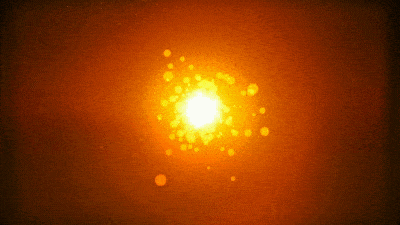Secure Supplies
Energy Power Gas Magazine
Fueling Healthy Communities
Secure Supplies
Energy Power Gas Magazine
Fueling Healthy Communities

Secure Supplies Group
Asia Pacific Power Gas Energy News
Access Key policy Events and key Project updates
for Asia-Pacific economies.
Australia
Guam
Chatham Islands
Commonwealth of Nations
New Zealand
Midway
Hawaii
Wallis and Futuna
Tokelau
American Samoa
World Bank
United Nations
Western and Central Pacific Fisheries Commission
Asian Development Bank
Northern Mariana Islands

News Highlights
The South Australian Government has co-invested over $17 million in four green hydrogen projects.
The projects are at various stages of development to accelerate and support investment in renewable technologies in South Australia.
There are many opportunities for partnership including research and development, export and off-take infrastructure, and to invest in new hydrogen projects.
The four hydrogen projects are outlined below:

Neoen Australia Hydrogen Super hub – Crystal Brook energy park
Neoen Australia’s 50 megawatt (MW) Hydrogen Super hubplanned at Crystal Brook is envisioned to be the world’s largest co-located wind, solar, battery and hydrogen facility.
Australian Gas Infrastructure Group (AGIG) – Hydrogen Park SA
AGIG’s Hydrogen Park of South Australia (HyP SA) will deliver a 1.25 MW electrolyser at the Tonsley Innovation District in Adelaide’s southern suburbs. The plant will produce hydrogen from renewable electricity, which will then be injected into the local gas distribution network.
AGIG’s Hydrogen Park of South Australia will deliver a 1.25 MW electrolyser at the Tonsley Innovation District in Adelaide’s southern suburbs.
As a national gas network distributor, Australian Gas Infrastructure Group (AGIG) own 33,764 km of natural gas networks and over 3,500 km of transmission pipelines across South Australia, Queensland, New South Wales, Victoria, Western Australia and the Northern Territory.
AGIG’s Hydrogen Park of South Australia (HyP SA) will deliver a 1.25 megawatt (MW) polymer electrolyte membrane (PEM) electrolyser at the Tonsley Innovation District in Adelaide’s southern suburbs.
The power-to-gas demonstration plant will produce up to 100 kilograms of hydrogen per day from renewable energy and recycled water.
The produced hydrogen will then be injected (up to 15 per cent) into the local gas distribution network with future potential to provide low-carbon gas to homes and businesses.
The South Australian Government has provided a $4.9 million to support the project, which is expected to commence in 2019.
AGIG is further investigating the establishment of a co-located National Hydrogen Centre of Excellence at Tonsley.
Further details on other renewable technology projects funded by the South Australian Government can be found on the hydrogen projects page.
The Hydrogen Utility™ – hydrogen and green ammonia production facility
Australian hydrogen infrastructure company The Hydrogen Utility™ (H2U) will construct a 30 MW water electrolysis plant, as well as a facility for sustainable ammonia production near Port Lincoln in South Australia.
University of South Australia – hydrogen demonstration project
The University of South Australia’s demonstration projectincludes hydrogen production, a hydrogen fuel cell, a flow battery, chilled water storage, and ground and roof-mounted solar photovoltaic (PV) cells. The project will cut campus emissions by 35 per cent and reduce peak demand on the grid.
The University of South Australia is investing in a $7.7 million hydrogen storage demonstration project as part of its broader solar, battery and thermal storage microgrid.
The University of South Australia is investing in the creation of hydrogen production and utilisation infrastructure, coupled to a substantial renewable energy generation facility, to demonstrate how hydrogen can improve the reliability and security of the South Australian electricity network.
The precinct scale project at the Mawson Lakes Campus will demonstrate hydrogen’s future role firming intermittent renewable electricity generation and help prepare the next generation of energy industry professionals with direct experience of hydrogen production and use in fuel cells.
The South Australian Government has provided funding towards the University of South Australia’s $7.7 million hydrogen storage demonstration project as part of its broader solar, battery and thermal storage microgrid which includes:
-
hydrogen production
-
a 50 kilowatt (kW) hydrogen fuel cell
-
a 0.45 megawatt hour (MWh) flow battery
-
3.2 million litres of chilled water storage
-
1.8 megawatt (MW) of ground and roof-mounted solar photovoltaic generation.
The South Australian Government has provided a $3.6 million grant to the demonstration project.
The project will cut campus emissions by 35% and reduce peak demand on the grid.
Further details on other renewable technology projects funded by the South Australian
Government can be found on the hydrogen projects page.
Resource maps are available to help potential investors and developers find suitable locations for renewable energy projects in South Australia.
Click on the tiles below to access maps not listed below.
Wind and solar
South Australia’s Renewable Energy Atlas shows locations with ideal conditions to deploy wind and solar projects. It also identifies the location of existing renewable energy projects and our State’s electricity transmission network and power plants.
Hydrogen
The Interactive Hydrogen Map assists investors and project developers to identify potentially suitable sites in South Australia to deploy hydrogen production, transport and utilisation.
Bioenergy
The Australian Renewable Energy Mapping Infrastructure helps developers and financiers evaluate spatial renewable energy information for bioenergy projects.
Ocean energy
A map of the best sites for harvesting energy from the ocean’s waves, currents and tides is available as a spatial data layer within the Australian Renewable Energy Mapping Infrastructure.
Acknowledgements
-
Renewable SA
-
Australian Renewable Energy Agency
-
Clean Energy Council
-
Bureau of Meteorology
-
ElectraNet
-
Government of South Australia - Energy & Environment
-
WindLab
Do you know more about this story? Contact us through this link.
Click here to learn about advertising, content sponsorship, events & round tables, custom media solutions, whitepaper writing, sales leads or eDM opportunities with us.
To get a media kit and information on advertising or sponsoring click here.




